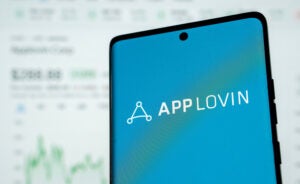 While publishers generally concede that brand advertisers will pay higher CPMs for “in-view” ads, there’s less acceptance around the different tools, like Nielsen’s Online Campaign Ratings or comScore’s Validated Campaign Ratings (vCE), designed to determine viewability.
While publishers generally concede that brand advertisers will pay higher CPMs for “in-view” ads, there’s less acceptance around the different tools, like Nielsen’s Online Campaign Ratings or comScore’s Validated Campaign Ratings (vCE), designed to determine viewability.
The big problem is that the viewability solutions have so far tended to focus on the advertisers, leaving publishers in the dark to some extent.
“Technology partners that aid in viewability help the industry at large and need to be careful to focus on both sides of the transaction, aiding both the advertisers and the publishers equally,” said Alanna Gombert, general manager of CatalystDesk at Condé Nast.
But many measurement providers don’t offer guidance to publishers around matching target audiences, which is why publishers often show ads to millions of viewers and hope they deliver enough views to members of the target demographic. Publishers only find out if they were successful post-impression and, in the meantime, they’ve filled millions of inventory slots with ads for which they won’t get paid. This restricts the sell side’s ability to pull inventory together in a way that maximizes performance.
In November, comScore sought to assuage this pain point with the introduction of Validated Media Essentials (VME), billed as the sell-side complement to vCE meant to give publishers a closer look at how they might meet a buyer’s request at the outset. The tool’s intent is to enable clients to see “gross ratings points (GRPs) for all screens” and represents a preliminary step to understanding consumer engagement with ads, said Jeff Hackett, EVP of comScore. VME uses the same technology and algorithms that underpin vCE so publishers can anticipate marketers’ needs around creating specific ad packages, managing their ad slots, site channels and creative options.
This addition is important because viewability is considered the clearest way of applying the TV advertising standard GRPs to online ad spending. The idea is that if brand advertisers trust an ad was seen, as opposed to merely having the potential of reaching a certain number of impressions, marketers will be more willing to shift lucrative branding campaign dollars to the Web.
“By its nature, vCE is a campaign level solution and it’s forced the sell side to be more reactive,” Hackett said. “You could say that it’s put them on their heels a little bit. That was never our intention, but what else was going to happen if they didn’t have something pushing them and setting them up for success with advertisers?”
Besides helping advertisers and publishers agree on what constitutes viewability, a sell-side product like VME could also help reduce resistance to comScore’s main demand-side products, which is especially important considering the increasing variety of viewability offerings from Google and other competitors.
ComScore won’t discuss publisher adoption of VME, though it is working on building more ties with vendors with close publisher relationships. At the end of December, comScore touted a deal with video content distribution service FreeWheel on both vCE and VME.
Among the uses FreeWheel has planned for vCE and VME are tagging video content across screens, managing campaigns in real time and creating forecasting models. In a statement, FreeWheel CEO Doug Knopper sees value in viewability as reflecting linear measurements like the ones used for TV, while allowing for the greater accountability associated with the Web.
“We recently saw TV Everywhere ad views more than double, which is yet another indication that integrations with partners like comScore are essential for not only digital video channels, but also the large television networks,” Knopper said.












